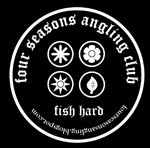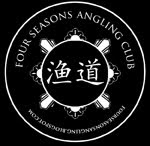
Gyeonji (견지낚시) is the traditional fishing method of Korea that has been around for at least several hundred years, with the first officially documented records being from 1764, and showing up earlier through painting in 1742. Considering that this style shows up in several paintings in different regions of Korea prior to the documented dates, the style is believed to date back at least couple of hundred years before the recorded date. Historians predict that Gyeonji is the style of fishing preferred by the working class farmers, as it requires one to be either submerged in the water or on a raft to fish effectively. Both of these would have been considered improper behavior for a nobleman back in those days.
I am certainly no expert on Gyeonji, but from those that I have spoken to & from what I have read, the fishing methods are classified into 3 different categories using the GyunJi rod. The 3 categories differ in the hook & line set up, and the lure/ bait that is used. The most conventional method is locating the fish holding line (from upstream), chumming downstream along the line with bait, then drifting the baited hook line with the same bait. The line is drifted freely downstream, then retrieved up stream, and fish can be caught either going downstream or up. The success in Gyeonji depends on how well you find the fish holding line, the ability to drift the bait at the right depth, and the control of your line in depth & direction. There are various weight, line & hook set ups that are used depending on the depth of the water and the species one is fishing for. The weighted rigs are similar to what we see in conventional bait fishing, most common with a stationary weight but also with moving weight (similar to a Carolina rig). The use of artificial flies are common in Gyeonji fishing, however everyone swears that bait is highly effective. In still water or deep lake fishing, chumming is used to attract the fish. One of the interesting fact I learned was that a key ingredient to chumming bait has historically used in Gyeonji fishing is ground up sesame leaves, but I’m not sure why. In all cases, the line is drifted or dropped, as there is no casting in Gyeonji fishing.
The Gyeonji fishing gear is one of the most efficient set up I have seen, that allows the angler to control the length of the line with an object that is both a rod & a reel (in one piece). The finer, high quality rods are created from bamboo and can set you back few thousand dollars, while there are cheap rods you can buy for about twenty bucks, which are made from graphite or metal. I won’t go into depth about what characters constitutes a good Gyeonji rod but from the experts I spoke with, the characteristics are similar to a fine bamboo fly rod (I’ll write more on this after I go out Gyeonji fishing with Enue soon). Another key gear is what they call “soo jang dae” which is both a wading staff & fish tackle holder (fish basket, bags, etc.) while standing in water. This staff allows the angler to have both hands free to reel in when a fish is caught.
Don’t be deceived by the short and somewhat flimsy looking Gyeonji rod, as the photos from different Gyeonji sites show off the big fish that’s been caught with this style of fishing. I am always fascinated with set ups that are light & efficient that has the ability to catch big fish. The gear that’s available for Gyeonji fishing has remained true to traditions, but I wouldn’t be surprised to find new generations working on evolving the gear & techniques used (perhaps us). There is a strong following of people who fish Gyeonji style in Korea, and some universities have set up classes & departments which focus on the history & technique of Gyeonji. I can’t wait to try this uniquely Korean fishing style soon. Stay tuned for photo updates with me holding trout on Gyeonji rod ;-)






















This has nothing to do with Gyeonji... but I am always amazed by how much (and fast) you could type with your 독수리타법.
ReplyDeleteAnd thanks for sharing this story, too.
like i said before, real typing is for the low class. type with two fingers.
ReplyDelete